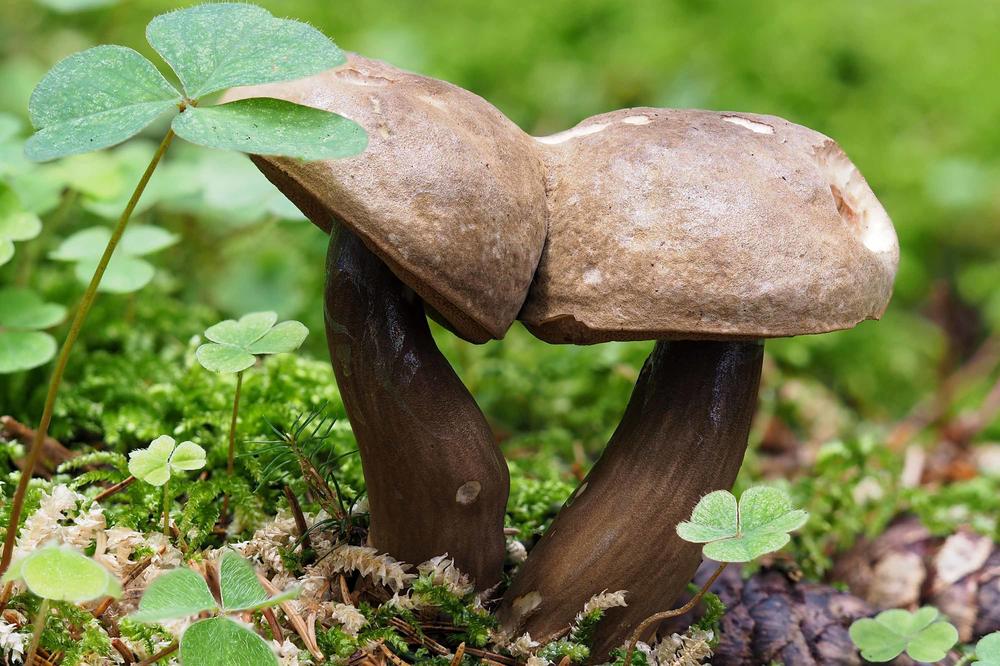Substrate Solidarity
Ecologist Matthias Rillig is investigating the symbiotic relationship between fungi and plants
Oct 07, 2022
Standing in the garden behind the research building located at Altensteinstraße 6 in Dahlem, Berlin, Matthias Rillig gestures at the grass, shrubs, and trees. “There is no doubt in my mind that most of these plants work together with soil fungi,” says Rillig, professor of soil ecology at Freie Universität. More than eighty percent of all land-based plant species have a symbiotic relationship with arbuscular mycorrhizal (AM) fungi. “AM fungi have been around for a few hundred million years more than the stuff we put on our pizzas,” explains Rillig. They also look a little different. While AM fungi may not have an edible fruiting body that grows above ground, they do have a distinctive “mycelium” – the name given to the mass of thread-like cells from which a fungus grows. The fine threads, known as “hyphae,” weave themselves into the root tips of plants, joining together to form a “mycorrhiza,” a term derived from the Greek words for “fungus” (mykes) and “root” (rhíza).
“There is a simple reason for this,” Rillig says. “These fungi are unable to independently capture enough carbon to ensure their survival. As such, they colonize plant roots to access sugar and lipids that the fungus can easily process. In the ideal scenario, the fungus creates an entire network and, in doing so, ensures access to multiple plants just in case. In return, the fungus helps its host by making it easier for the plant to access nutrients such as nitrogen and phosphorus. The fungal hyphae are smaller, longer, and contain more branches than plant roots, making them highly suitable for transporting nutrients.
Can Trees “Speak” to Each Other via the “Wood Wide Web?”
The concept of mycorrhiza has been around for several decades. However, researchers are just now beginning to discover the extent of their importance. For example, plants are able to benefit from this partnership when environmental conditions worsen – for example, where nutrients or water is scarce – and have also been found to enter into these partnerships as a preventative measure, even when conditions are good. But do they really make use of mycorrhiza networks to share resources, communicate with one another, and warn each other against pests, as some scientific publications claim? Can trees and other plants really “speak” to one another via a “Wood Wide Web” consisting of hyphae – as the popular media is fond of reporting?
These are some of the questions Rillig is hoping to answer, together with researchers from Turin, Dublin, and Manchester. “We want to establish whether these effects really stem from shared networks and are not simply the result of symbiosis,” he says. For example, it is possible that one plant simply secretes material into the soil, where it is then absorbed by another plant – without the use of hyphae. To get to the heart of the issue, the soil ecologist has come up with a complicated experiment: 1440 plants of different types will be cultivated on large tables in a greenhouse. Their roots will be kept separate from one another using fine-meshed nets that still allow hyphae to pass through. Once a day, half of the plants will be turned by one millimeter, breaking any connections they may have made with other nearby plants. This means that one group is able to form shared networks, while the other is not. All plants are subjected to the same factors, such as drought. “This will allow us to observe whether shared networks are advantageous.”
Rillig is using plant species typically found in North European grassland to find out whether networks of fungi could make these ecosystems more resistant to drought. The study is funded by the European Union through the program “SOIL-HEAL – Symbiotic Solutions for Healthy Agricultural Landscapes.”
This article originally appeared in German on September 27, 2022, in the Tagesspiegel newspaper supplement published by Freie Universität Berlin.
Further Information
- Matthias Rillig's Lab (website)
- Matthias Rillig on TikTok and YouTube
- “Life in the Soil,” Matthias Rillig's podcast

